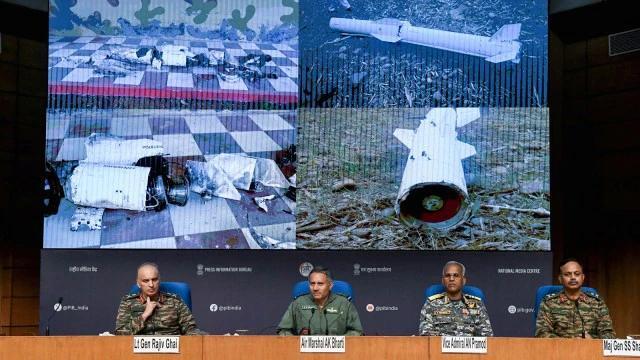
India Shares Names of Pakistan’s Destroyed Drones and Missiles
In a significant development, the Indian government has revealed the names of the drones and missiles of Pakistani origin that were neutralized by Indian systems during the recent Operation Sindoor. According to a statement by the government, the operation produced concrete evidence of hostile technologies that were successfully taken down by Indian defense systems.
The statement said that Pakistan had launched hundreds of drones and missiles, including some of Chinese and Turkish origin, at Indian targets. These included the PL-15 missiles, which are of Chinese origin, Turkish-origin UAVs named “Yiha” or “YEEHAW”, long-range rockets, quadcopters, and commercial drones.
The PL-15 missile is a Chinese-made air-to-air missile that is known for its advanced capabilities. It has a range of over 100 kilometers and is considered one of the most advanced missiles in the Chinese arsenal. The Turkish-origin UAVs, on the other hand, are part of a range of surveillance and reconnaissance drones manufactured by Turkish companies.
The revelation comes as a significant blow to Pakistan’s military, which had been trying to hide the extent of its drone and missile capabilities. The Indian government’s statement has shed light on the extent of Pakistan’s military modernization efforts and its attempts to use advanced technology to target Indian military installations and civilian infrastructure.
The operation, which was carried out by Indian defense systems, was successful in neutralizing the hostile technologies and preventing any significant damage to Indian assets. The Indian government has hailed the operation as a major success, saying that it has sent a strong message to Pakistan that any attempt to use advanced technology to target India will be met with swift and decisive action.
The revelation of the names of the drones and missiles is likely to raise concerns among Pakistan’s allies and partners, who may have been unaware of the extent of Pakistan’s military modernization efforts. It is also likely to increase tensions between India and Pakistan, which have a long history of conflict and rivalry.
The Indian government’s statement has been welcomed by many experts and analysts, who say that it highlights the importance of India’s defense preparedness and its ability to neutralize hostile technologies. “India’s defense systems have once again proved their effectiveness in neutralizing hostile technologies,” said a leading defense analyst. “This is a significant development and highlights the importance of India’s defense preparedness in the face of evolving threats.”
The revelation of the names of the drones and missiles is also likely to have implications for the ongoing peace talks between India and Pakistan. The two countries have been engaged in a peace process for several years, but tensions have remained high due to a range of issues, including cross-border terrorism and border disputes.
In recent months, there have been several incidents of cross-border terrorism and border skirmishes between India and Pakistan, which have raised concerns about the stability of the region. The revelation of the names of the drones and missiles is likely to add to these concerns and may lead to a re-evaluation of the peace process.
In conclusion, the Indian government’s revelation of the names of Pakistan’s destroyed drones and missiles is a significant development that highlights the importance of India’s defense preparedness and its ability to neutralize hostile technologies. The revelation is likely to raise concerns among Pakistan’s allies and partners, and may have implications for the ongoing peace talks between India and Pakistan.



